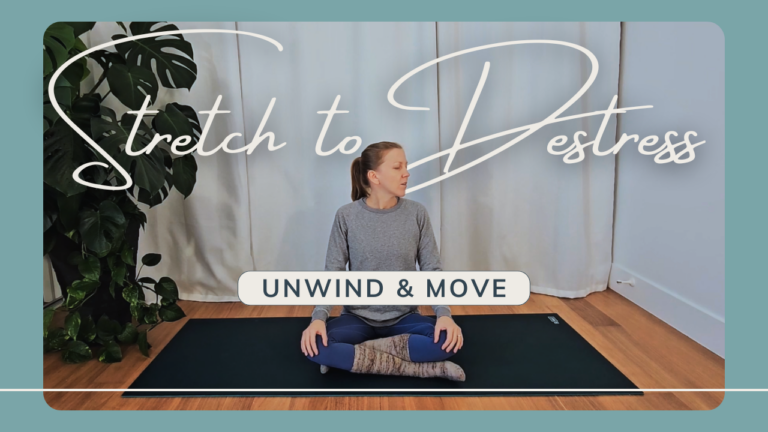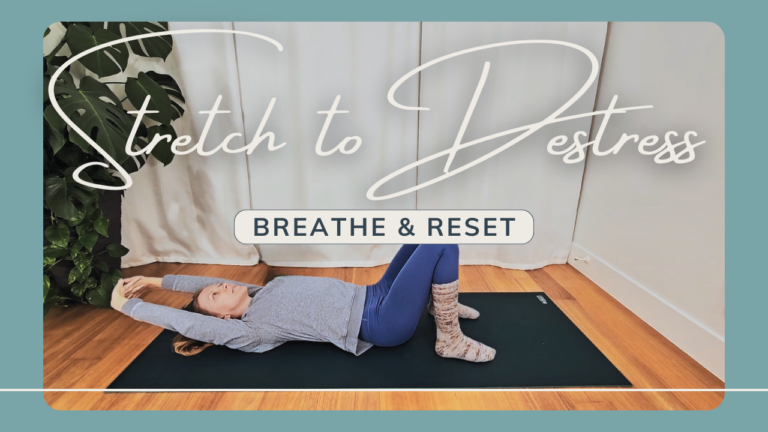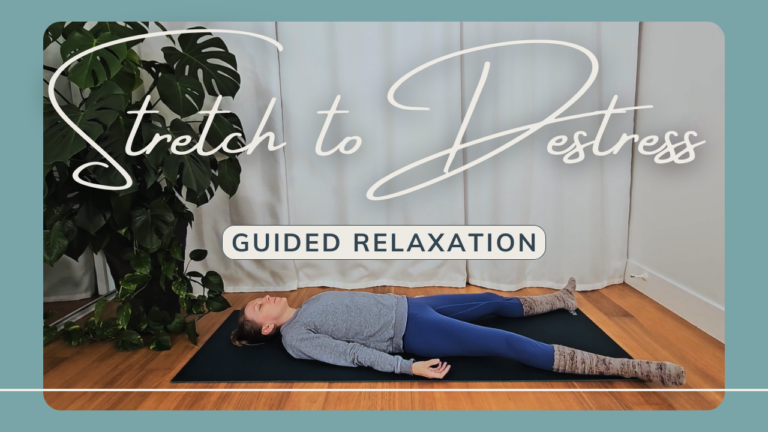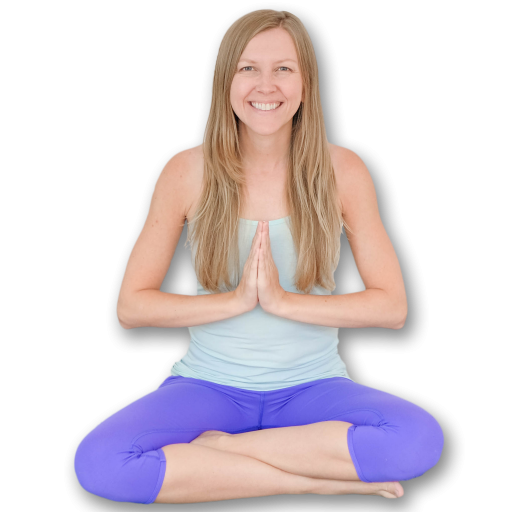Aging often reduces stability, but yoga is a fantastic way to combat this! Whether you’ve personally felt a decline or not, incorporating beginner-friendly poses like Palm Tree, Tree Pose, and Knee to Chest Pose into your routine can significantly contribute to maintaining or improving your stability.
To get you started, I’ll explain the three beginner poses mentioned above in more detail. You’ll find tips and modifications for each pose making them accessible no matter your current experience level.
Palm Tree Pose
Since both feet stay in contact with the ground in this pose, it is a great starting point to work on stability.
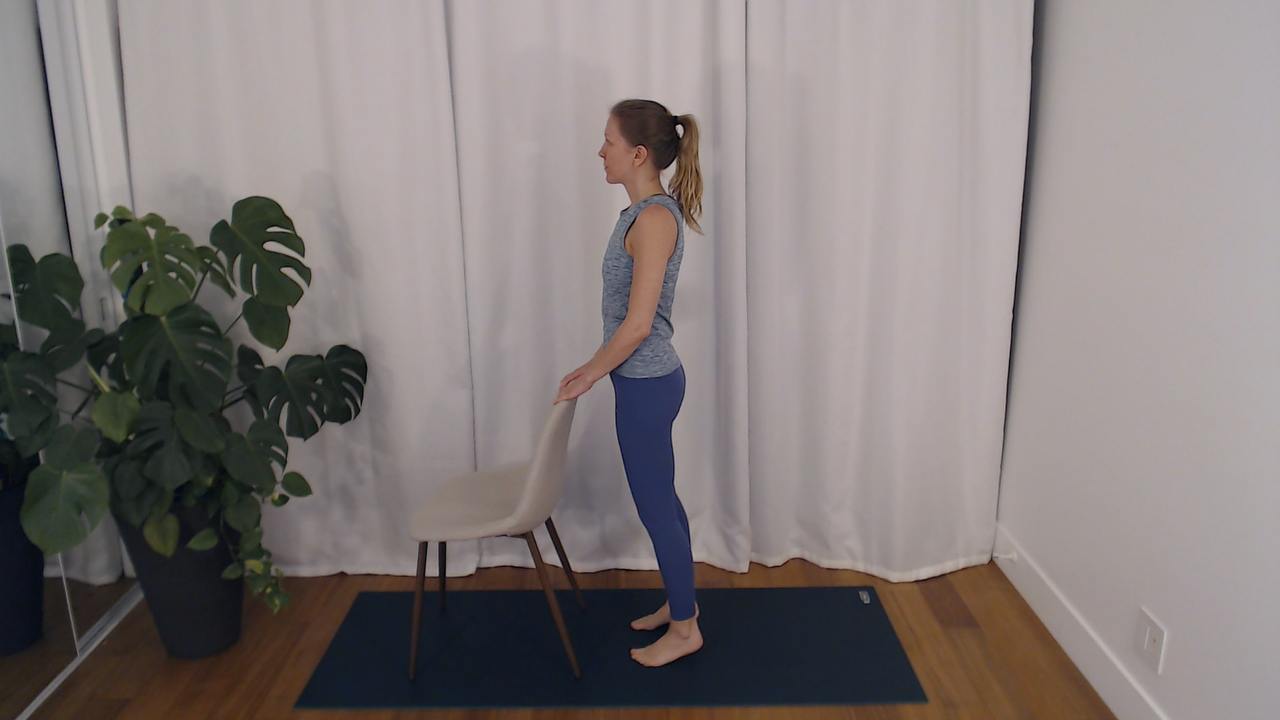
- Stand tall with feet hip distance.
- Hold the back of a chair for support.
- Engage your core – this helps you stay stable (learn how to engage your core by clicking here).
- Gently lift your heels off the floor, about an inch.
Once you feel stable:
- Progress to lifting your heels higher (if you feel comfortable).
- Try releasing your hands from the back of the chair.
- Clasp hands, reverse palms, extend arms, and raise them above your head.
- Hold for 20 seconds, then gently lower heels, repeat 3 times.

Tree Pose
Tree pose provides the option for both feet to stay in contact with the floor and it’s also a great hip opener!

- Begin by holding the back of a chair for support.
- Engage your core and shift weight to your right leg
- Slightly bend the left knee, and turn it out to the side.
- Keep the ball of your left foot on the floor initially, and rest the sole of your foot against your right ankle
Once you feel stable:
- Lift your left foot to the inside of your right calf or thigh.
- Try releasing your hands from the back of the chair.
- Press palms together in front of your chest.
- Hold for 20 seconds, lower foot, repeat on each side 3 times.

Knee to Chest Pose
Don’t let the name intimidate you! It is completely fine if you don’t get your knee all the way towards your chest. There are many options to make it accessible and it also offers a nice stretch to your lower back, hips, and glutes.
- Start with your back against a wall for stability.
- Engage your core and shift your weight to your left leg
- Grab under your thigh or around your shin.
- Tip: Use a strap/resistance band for assistance if reaching around your leg is challenging.
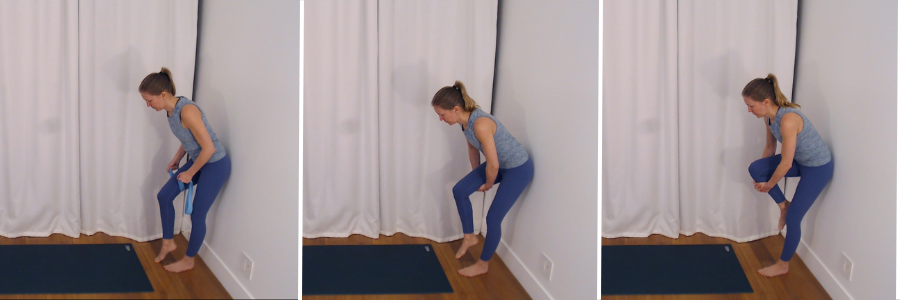
- Stand up tall and draw your thigh/knee closer to your chest
- Hold for 20 seconds, then slowly lower your foot.
- Repeat on each side 3 times, gradually moving away from the wall once you feel stable.
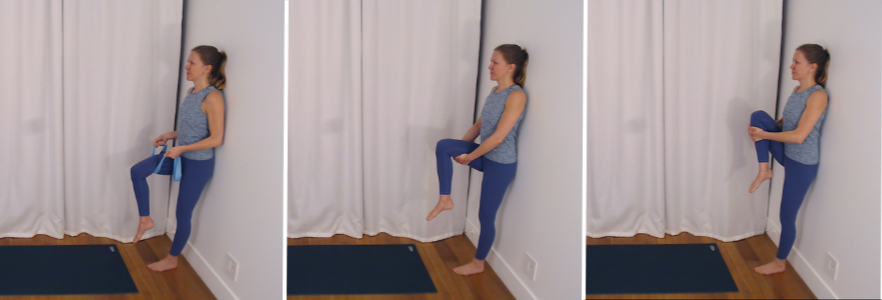
Incorporating these balance exercises into your routine increases your stability, but also provides various other benefits. Explore the additional ways these poses will help you by clicking here.
Remember to listen to your body and be patient with yourself. If you find using a chair or wall helpful, use them as long as you like! There is no rush to move to the next level, and it’s important to recognize that progress can take time.

